
Browse an alphabetical list of photographs. These historical images portray people, places, and events before, during, and after World War II and the Holocaust.
<< Previous | Displaying results 226-250 of 2641 for "Photo" | Next >>
Cartoon depicting the United States' response to the refugee crisis in Europe, as well as the racism and discrimination African Americans faced at home. The Pittsburgh Courier, April 16, 1938. Page 10. Domestic concerns in the United States, including unemployment and national security, combined with prevalent antisemitism and racism, shaped America's immigration policies, responses to Nazism, and willingness to aid European Jews.
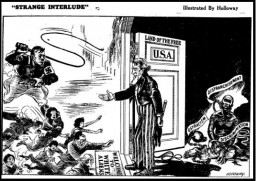
Dr. Bernard Deutsch, president of the American Jewish Congress (center) and Rabbi Stephen S. Wise (right) participate in a mass demonstration against Nazi treatment of German Jews. The demonstration took place on the same day as the book burnings in Germany. New York, United States, May 10, 1933.
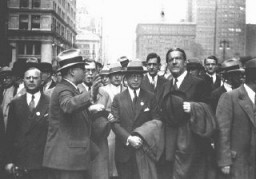
Ernest Hemingway, among the greatest American novelists, was a member of the "Lost Generation" of expatriate writers who were disillusioned by war. In 1933 the Nazis burned Hemingway's novels as part of the public book burning in Berlin. United States, ca. 1950.
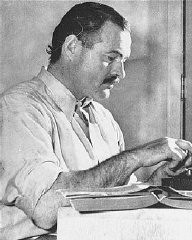
Survivors of Mauthausen cheer American soldiers as they pass through the main gate of the camp. The photograph was taken several days after the liberation of the camp. Mauthausen, Austria, May 9, 1945.
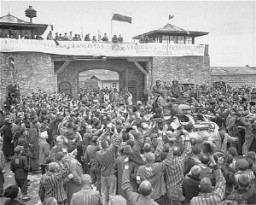
American troops, including African American soldiers from the Headquarters and Service Company of the 183rd Engineer Combat Battalion, 8th Corps, US 3rd Army, view corpses stacked behind the crematorium during an inspection tour of the Buchenwald concentration camp. Among those pictured is Leon Bass (the soldier third from left). Buchenwald, Germany, April 17, 1945.
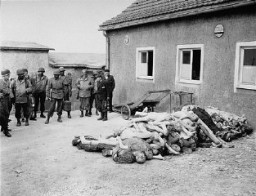
An aerial view of Amsterdam. The photograph was taken for German military use. Amsterdam, the Netherlands, 1939-1940.
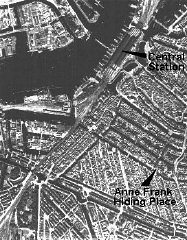
An African-American soldier with the 12th Armored Division, Seventh U.S. Army, stands guard ov...
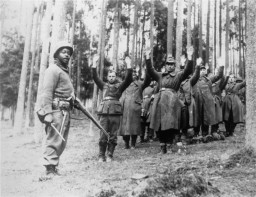
Laurette Cohen (front row, far right) poses with her students at an Alliance Israelite School in Morocco. 1935. Laurette was born in Oran, Algeria, 1911. In 1932, she married Prosper Cohen (born in Meknes in 1909). They were both teachers for the Alliance Israelite Universelle Schools in Morocco. Their daughter, Mathilde, was born in Tangiers on August 31, 1933. Before 1939, the family lived in Meknes and Fez. Later, Laurette and Prosper were sent to teach in other different locations where they were…
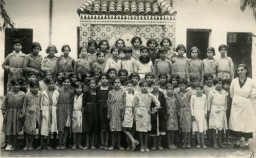
An American soldier stands guard in front of the Hadamar Institute. The photograph was taken by an American military photographer soon after the liberation. Germany, April 5, 1945.
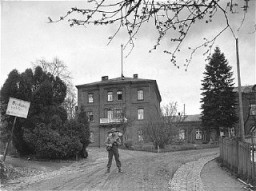
Photograph of a display entitled "British Freemasonry." It appeared in an anti-Masonic exhibition at a Berlin museum. Germany, March 7, 1941.
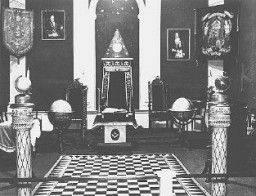
This Arabic translation of the Protocols by Ajaj Nuwayid also has appeared on a website sponsored by the Palestinian State Information Service. Published in Beirut, Lebanon, 1996.
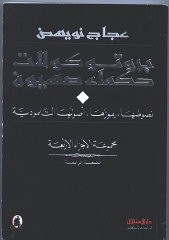
An Armenian refugee, wearing a scarf and a pack on her back. Ottoman Empire, 1918-20. Sometimes called the first genocide of the twentieth century, the Armenian genocide refers to the physical annihilation of Armenian Christian people living in the Ottoman Empire from spring 1915 through autumn 1916. There were approximately 1.5 million Armenians living in the multiethnic Ottoman Empire in 1915. At least 664,000 and possibly as many as 1.2 million died during the genocide, either in massacres and…
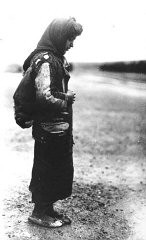
An Armenian woman and her child sit on a sidewalk next to a bundle of their possessions. Ottoman Empire, 1918–20.
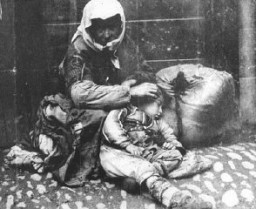
Crematorium 4 under construction. This crematorium was later destroyed during an uprising in the camp. Auschwitz-Birkenau, Poland, winter 1942-1943.
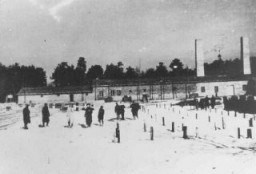
Many of the early concentration camps were improvised. Here, roll call is held for political prisoners aboard a ship used as a floating concentration camp. Ochstumsand camp, near Bremen, Germany, 1933 or 1934.
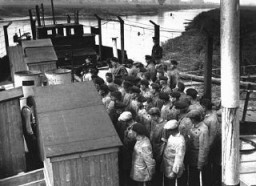
Portrait of an elderly Jewish woman wearing a Jewish badge in the Olkusz ghetto. Olkusz , Poland, 1941.
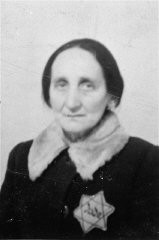
Soon after liberation, a US Army doctor examines an emaciated forced laborer, a Soviet prisoner of war. Dortmund, Germany, April 30, 1945.
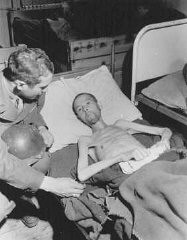
Shortly after liberation, an emaciated concentration camp inmate stands between two members of the International Red Cross. Theresienstadt, Czechoslovakia, May 1945.
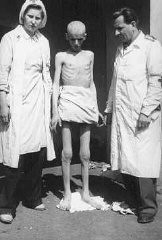
An emaciated woman sells the compulsory Star of David armbands for Jews. In the background are concert posters; almost all are destroyed. Warsaw ghetto, Poland, September 19, 1941. This photograph was taken by Heinrich Joest, a German army sergeant during World War II. On September 19, 1941, he took 140 images of every aspect of life and death in the Warsaw ghetto.
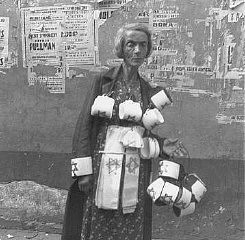
14-year-old Sara Bialovadska, imprisoned in the Kaiserwald concentration camp near Riga. Latvia, 1943.

A Soviet army instructor trains partisans in the use of grenades. Soviet Union, wartime.
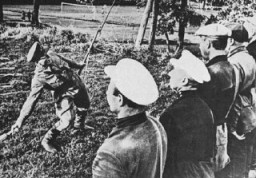
Detail of an interior bridge at the United States Holocaust Memorial Museum with the names of victims etched in glass. Washington, DC, 1996.
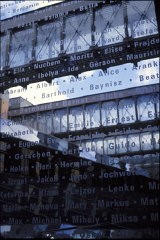
Interior designer from Duesseldorf who was charged with homosexuality and imprisoned for 18 months. Duesseldorf, Germany, date uncertain.
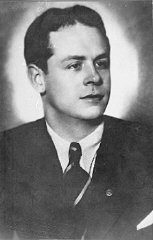
This photograph shows a market scene at the main square in Lwów, Poland, shortly before the outbreak of World War II. Sitting on the fountain is a man holding a chicken and a basket, likely filled with groceries. His long beard and style of dress, including the overcoat and fedora, identify him as a more traditional, religious Jew. Traditionally, observant Jewish men wore beards and kept their heads covered. An elderly woman selling produce sits on the pavement near the man. In contrast to the man, the…
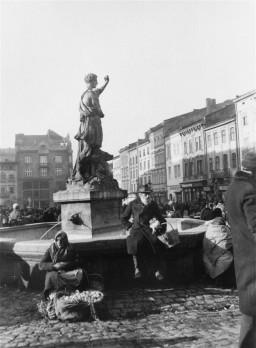
An SS guard examines piles of clothing belonging to the more than 33,000 Jews murdered at the nearby Babyn Yar killing site. The SS forced the victims to undress and leave their belongings behind. The Jews were then marched or driven to the shooting site. Kyiv (Kiev), German-occupied Soviet Union, after September 30, 1941.
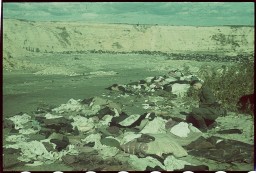
We would like to thank Crown Family Philanthropies, Abe and Ida Cooper Foundation, the Claims Conference, EVZ, and BMF for supporting the ongoing work to create content and resources for the Holocaust Encyclopedia. View the list of donor acknowledgement.